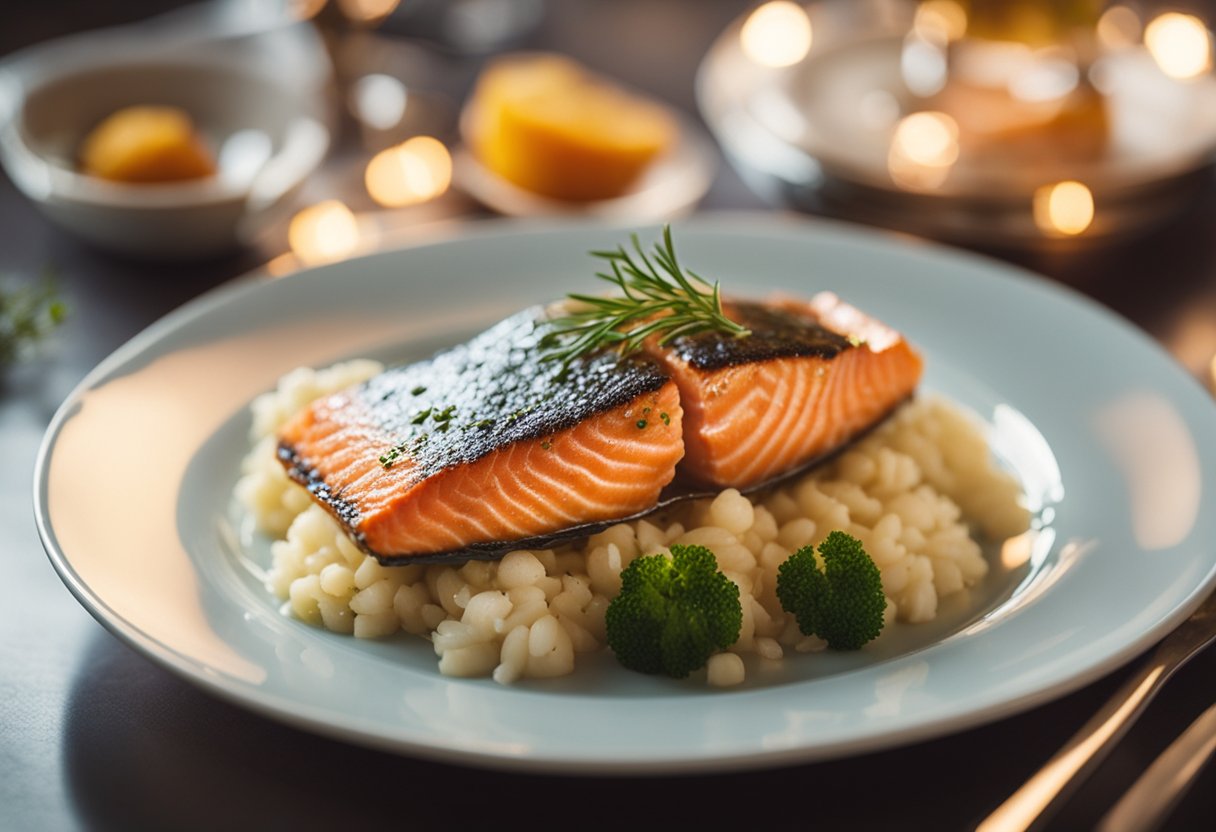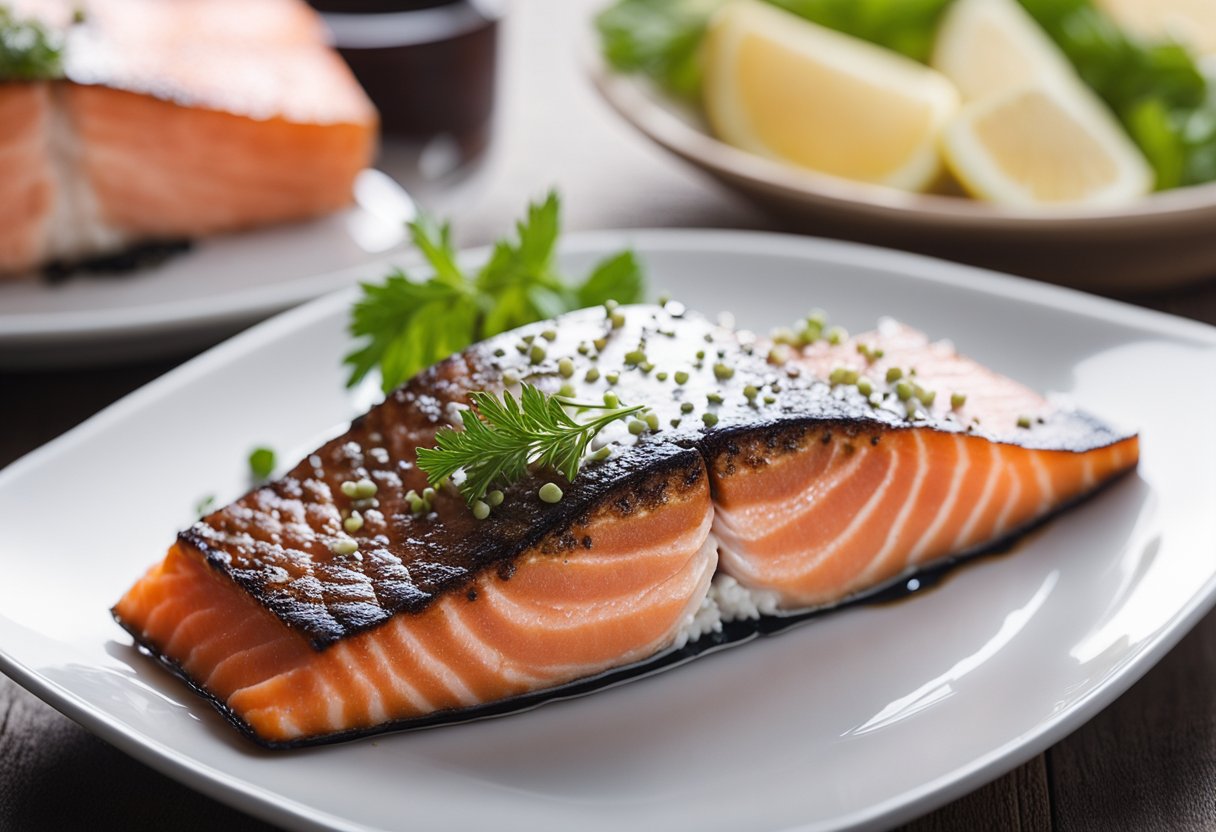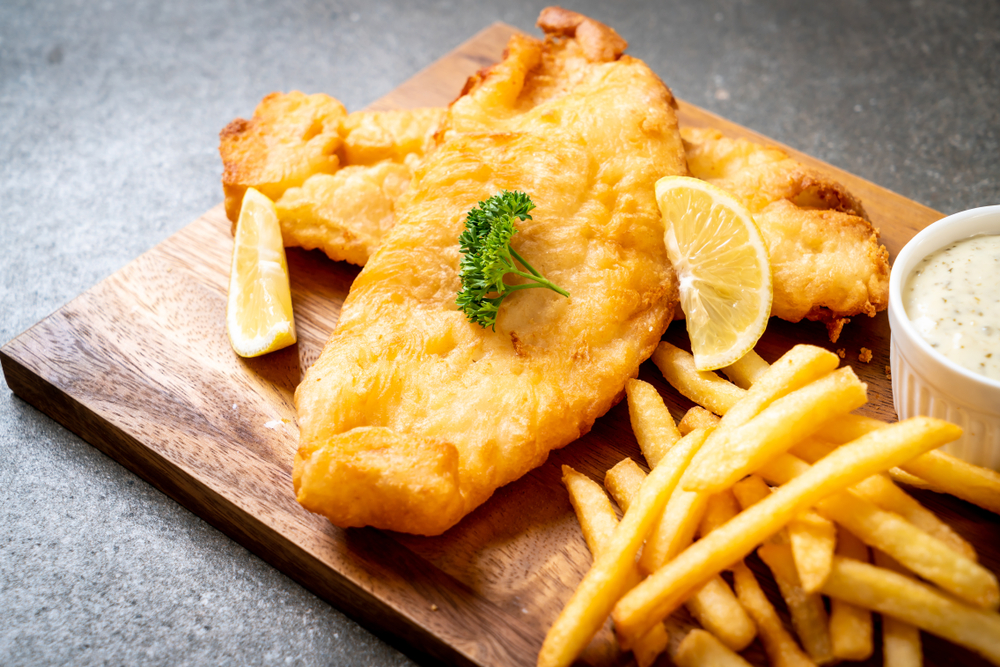When it comes to reheating salmon, there are a variety of methods to choose from. However, not all methods are created equal, and some may result in dry, overcooked fish.
As someone who loves incorporating salmon into my meals, I’ve done my fair share of experimenting with different reheating techniques. Through trial and error, I’ve discovered the best way to reheat salmon to retain its flavor and texture.

Understanding salmon is key to reheating it properly. Salmon is a delicate fish that can easily become dry and tough when reheated improperly. It’s important to handle salmon with care to avoid overcooking or drying it out.
Additionally, the type of salmon and how it was cooked initially can impact the best reheating method. By understanding the nature of salmon, you can choose the best reheating method to suit your needs.
Key Takeaways
- Reheating salmon in the oven is the best method to retain its flavor and texture.
- Adding moisture, such as lemon juice or olive oil, can help prevent the fish from drying out.
- Proper handling and understanding of salmon is crucial to successfully reheating it.
Understanding Salmon

Salmon is a popular fish that is known for its delicious taste and numerous health benefits. When reheated properly, it can be just as tasty as when it was first cooked. In this section, I will discuss the nutritional value of salmon, the different types of salmon, and the importance of reheating it properly.
Nutritional Value
Salmon is a great source of protein, omega-3 fatty acids, potassium, and vitamin B. It is a saltwater fish that is commonly found in the Pacific and Atlantic oceans.
Alaskan salmon is particularly popular due to its high quality and delicious taste. Smoked salmon is also a popular option that is often used in salads and sandwiches.
Types of Salmon
There are several different types of salmon, each with its own unique flavor and texture. Some of the most popular types include:
- Chinook (King) Salmon: This is the largest and most flavorful type of salmon.
- Coho (Silver) Salmon: This type of salmon is known for its mild flavor and firm texture.
- Sockeye (Red) Salmon: This type of salmon has a rich, strong flavor and bright red color.
- Pink Salmon: This type of salmon is the most common and has a mild flavor and soft texture.
Importance of Proper Reheating
When reheating salmon, it is important to avoid overcooking it, as this can cause it to dry out and lose its flavor. It is also important to ensure that the internal temperature of the salmon reaches at least 145°F to prevent the risk of foodborne illness.
To avoid overcooking, it is recommended to use an oven or toaster oven to reheat salmon. This evenly distributes heat and results in a perfectly warmed dish. Alternatively, you can use a microwave, but be sure to reheat the salmon in 20- to 30-second increments to avoid overcooking.
In conclusion, salmon is a delicious and nutritious fish that can be reheated to perfection when done properly. By understanding the nutritional value and different types of salmon, as well as the importance of proper reheating, you can enjoy this tasty fish any time.
Reheating Methods
When it comes to reheating salmon, there are several methods to choose from. Depending on your preference and the tools you have available, one method may work better for you than another. Here are some of the most popular methods for reheating salmon:
Oven Reheating
Reheating salmon in the oven is a popular method because it helps to retain the moisture and flavor of the fish. To reheat salmon in the oven, preheat your oven to 275°F (135°C). Place the salmon on a baking sheet lined with aluminum foil or parchment paper.
Cover the salmon with another sheet of aluminum foil to help trap in moisture. Heat the salmon in the oven for 10-15 minutes or until it reaches an internal temperature of 145°F (63°C).
Microwave Reheating
Reheating salmon in the microwave is a quick and easy method, but it can dry out the fish if not done properly.
To reheat salmon in the microwave, place the salmon in a microwave-safe dish and cover it with a damp paper towel. Microwave the salmon on a low setting for 30-second intervals until it reaches an internal temperature of 145°F (63°C).
Stovetop Reheating
Reheating salmon on the stovetop is another quick and easy method. To reheat salmon on the stovetop, place the salmon in a pan with a small amount of olive oil or butter.
Heat the salmon on low to medium heat until it reaches an internal temperature of 145°F (63°C). You can also reheat salmon by steaming it on the stovetop. Place the salmon in a steamer basket and steam it for 5-7 minutes or until it reaches an internal temperature of 145°F (63°C).
Air Fryer Reheating
Reheating salmon in an air fryer is a newer method that has gained popularity in recent years. To reheat salmon in an air fryer, preheat the air fryer to 350°F (175°C). Place the salmon in the air fryer basket and cook it for 3-5 minutes or until it reaches an internal temperature of 145°F (63°C).
No matter which method you choose, it is important to reheat salmon properly to avoid drying it out or overcooking it. By following these methods and using the right tools, you can enjoy reheated salmon that is just as delicious as the day it was cooked.
Tips to Retain Flavor and Texture
When reheating salmon, there are some tips you can follow to ensure that the fish retains its flavor and texture. Here are some of my favorite tips:
- Use lemon: Adding a squeeze of lemon juice to the salmon before reheating can help to enhance its flavor. Lemon juice can also help to keep the salmon moist during the reheating process. Simply drizzle some lemon juice over the salmon before reheating, or place a few lemon slices on top of the salmon.
- Add butter: Butter is another great ingredient to use when reheating salmon. Adding a small pat of butter to the salmon before reheating can help to keep it moist and flavorful. You can also melt some butter and use it as a sauce to serve with the reheated salmon.
- Cover with foil: Covering the salmon with foil during the reheating process can help to lock in moisture and prevent it from drying out. Simply wrap the salmon in foil before placing it in the oven or on the stovetop.
- Steam the salmon: Steaming is a gentle and effective way to reheat salmon without drying it out. To steam the salmon, place it in a steamer basket or on a plate and cover it with a lid or foil. Then, place the steamer basket or plate in a pot with a few inches of water and steam until the salmon is heated through.
- Use a sauce: Serving the reheated salmon with a sauce can help to add flavor and moisture. Try making a simple sauce with ingredients like lemon juice, butter, and herbs, or use a pre-made sauce that complements the flavors of the salmon.
By following these tips, you can ensure that your reheated salmon is flavorful, moist, and delicious.
Health Benefits and Risks
As a nutritionist, I always recommend consuming salmon as part of a healthy diet. Salmon is a great source of protein, vitamin B, Omega-3 fatty acids, and potassium. It even has astaxanthin, which can lower the risk of heart disease by increasing good cholesterol and reducing inflammation.
Omega-3 fatty acids found in salmon are incredibly important for brain function, memory, and maintaining healthy blood fat levels. Studies have shown that Omega-3s can also lower the risk of heart disease, lower blood pressure, and reduce inflammation in the body.
However, it is important to note that consuming too much salmon can also have risks. Salmon is high in mercury, which can accumulate in the body and cause health problems.
Pregnant women and children should be cautious about consuming too much salmon due to the risk of mercury poisoning.
In addition, consuming salmon that has not been stored or reheated properly can also lead to foodborne illnesses. It is important to reheat salmon properly to kill harmful bacteria that may have grown while being stored in the refrigerator. This significantly reduces or eliminates the risk of foodborne illness.
Overall, salmon is a healthy and delicious addition to any diet. However, it is important to consume it in moderation and to store and reheat it properly to avoid any potential health risks.
Meal Planning with Salmon
As someone who enjoys eating salmon, I always make sure to plan my meals ahead of time. Meal planning is a great way to ensure that you have healthy and delicious meals throughout the week. Here are some tips on how to incorporate leftover salmon into your meal planning and prep:
Leftovers
When you have leftover salmon, you can easily incorporate it into your meals for the next day or two. You can add it to salads, sandwiches, or wraps for a quick and easy lunch. You can also use it as a protein source for dinner by adding it to pasta or rice dishes.
Meal Prep
If you want to have salmon as part of your weekly meal prep, you can cook a large batch of salmon at the beginning of the week and divide it into portions. This way, you can easily grab a portion of salmon and pair it with some vegetables and side dishes for a quick and healthy meal.
Vegetables and Side Dishes
When planning your meals with salmon, it’s important to consider the vegetables and side dishes that will complement it. Some great options include roasted vegetables, quinoa, brown rice, and sweet potatoes. These options are not only healthy but also delicious and will help you feel satisfied and full.
In conclusion, incorporating leftover salmon into your meal planning and prep is a great way to ensure that you have healthy and delicious meals throughout the week.
By following these tips and pairing your salmon with nutritious vegetables and side dishes, you can enjoy a well-balanced and satisfying meal.
Frequently Asked Questions
What is the recommended way to reheat precooked salmon?
The recommended way to reheat precooked salmon is to use a low and slow method. You can use an oven, stovetop, microwave, or air fryer. The key is to make sure that the salmon is reheated evenly and doesn’t dry out.
How long should I reheat salmon in the oven?
When reheating salmon in the oven, preheat your oven to 275 degrees Fahrenheit, and place the salmon in a baking dish. Cover the dish with foil and bake for 15-20 minutes or until the internal temperature of the salmon reaches 145 degrees Fahrenheit.
Is it safe to reheat salmon in the microwave?
Yes, it is safe to reheat salmon in the microwave. However, you should cover the salmon with a damp paper towel or microwave-safe lid to prevent it from drying out. Microwave on high for 1-2 minutes or until the internal temperature of the salmon reaches 145 degrees Fahrenheit.
What is the best way to reheat salmon in an air fryer?
The best way to reheat salmon in an air fryer is to preheat the air fryer to 350 degrees Fahrenheit and place the salmon in the basket. Cook for 5-7 minutes or until the internal temperature of the salmon reaches 145 degrees Fahrenheit.
Can you reheat salmon more than once?
It is best to reheat salmon only once to maintain its quality. Repeated reheating can lead to further drying and loss of flavor.
How can I reheat salmon and keep it crispy?
To keep salmon crispy when reheating, use an oven or air fryer. Place the salmon on a baking sheet and preheat the oven to 400 degrees Fahrenheit. Bake for 10-12 minutes or until the skin is crispy. In the air fryer, preheat to 350 degrees Fahrenheit and cook for 5-7 minutes or until the skin is crispy.







